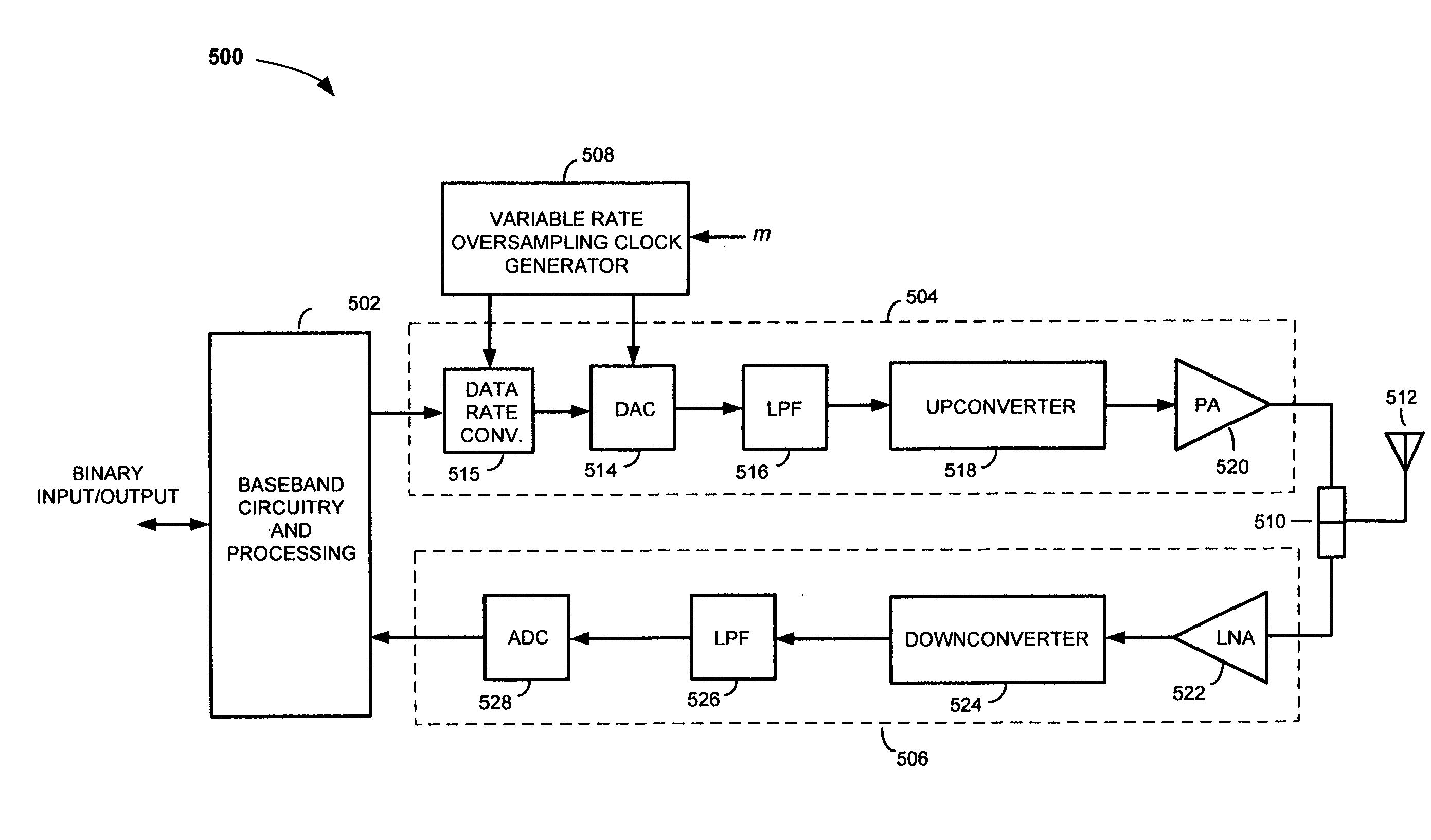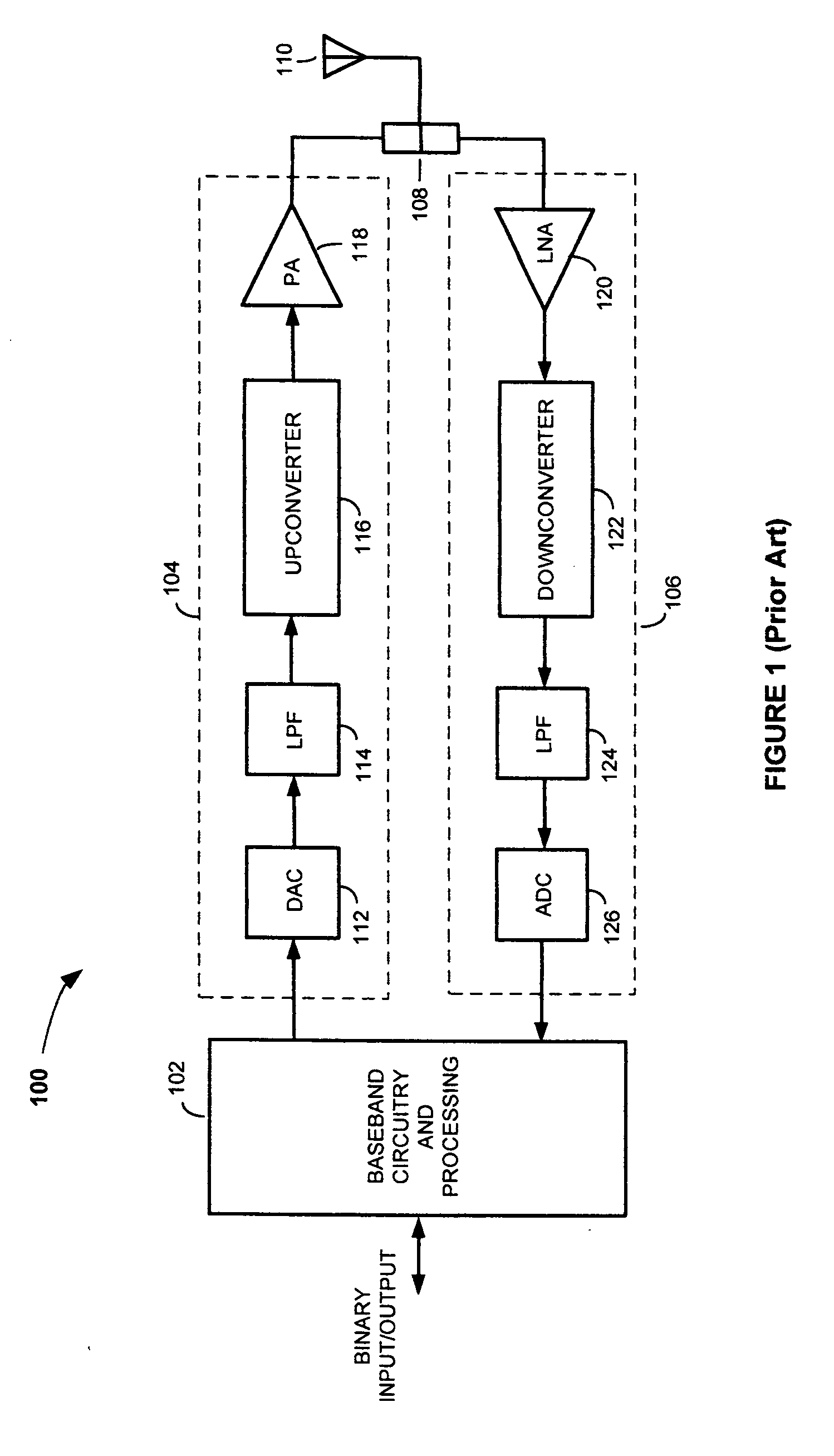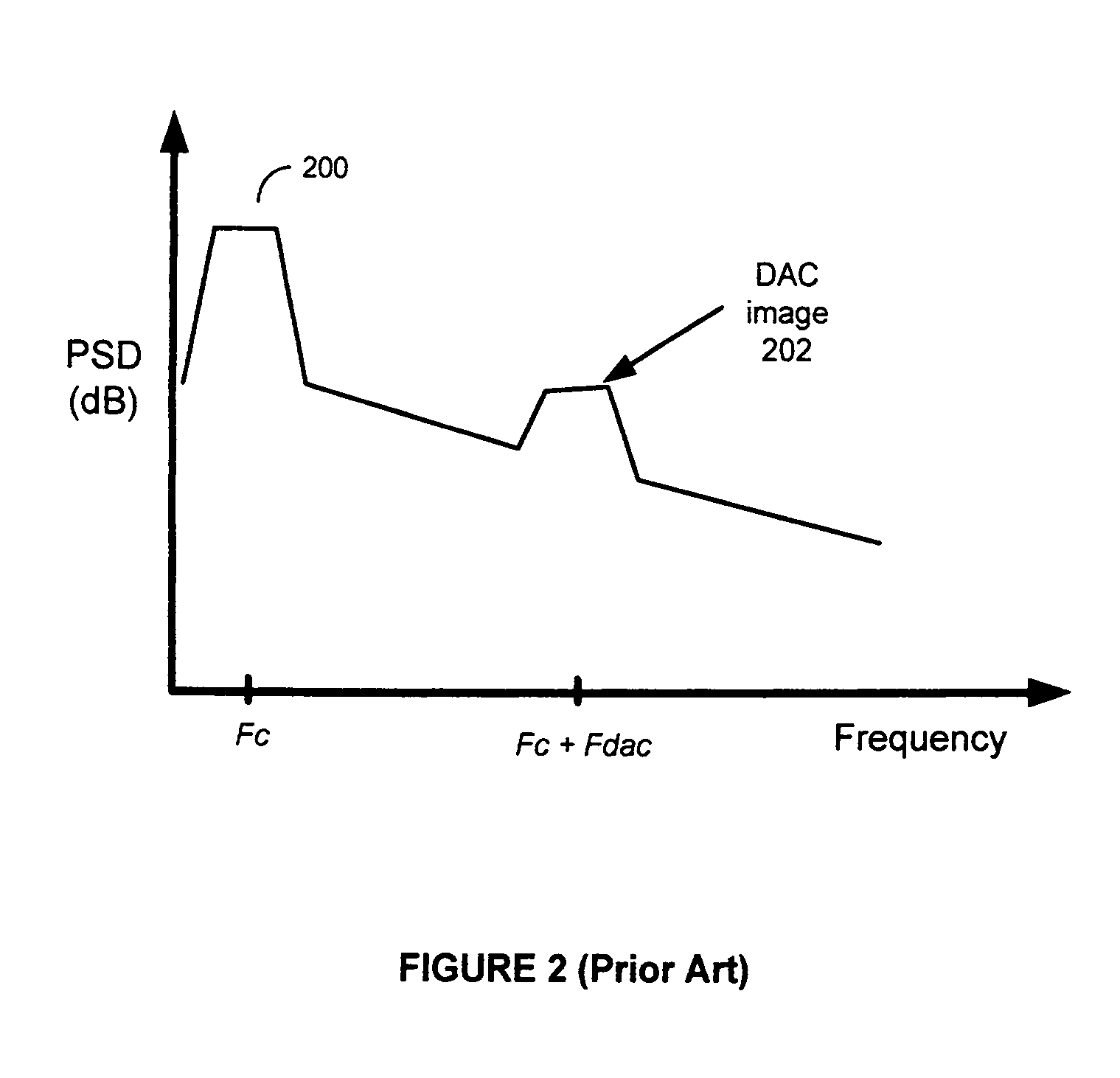Methods and apparatus for reducing the effects of DAC images in radio frequency transceivers
a radio frequency transceiver and image reduction technology, applied in the field of digital communication systems, can solve the problems of difficult to meet the noise requirements specified by standards, difficult to design analog filters having such characteristics, and difficult to attract attention, so as to reduce the effect of digital-to-analog converter (dac) images, reduce the desensitization of the receiver portion, and increase the dac
- Summary
- Abstract
- Description
- Claims
- Application Information
AI Technical Summary
Benefits of technology
Problems solved by technology
Method used
Image
Examples
Embodiment Construction
[0030]Those of ordinary skill in the art will realize that the following detailed description of the present invention is illustrative only and is not intended to be in any way limiting. Other embodiments of the present invention will readily suggest themselves to such skilled persons having the benefit of this disclosure. Reference will now be made in detail to implementations of the present invention as illustrated in the accompanying drawings. The same reference indicators will be used throughout the drawings and the following detailed description to refer to the same or like parts.
[0031]FIG. 5 shows an RF transceiver 500 according to an embodiment of the present invention. The transceiver 500 comprises baseband circuit and processing block 502, a transmitter portion 504, a receiver portion 506, a variable rate (i.e., adjustable) oversampling clock generator 508, a duplexer 510 and an antenna 512. The transmitter portion 504 of the transceiver 500 includes a data rate conversion ...
PUM
 Login to View More
Login to View More Abstract
Description
Claims
Application Information
 Login to View More
Login to View More - R&D
- Intellectual Property
- Life Sciences
- Materials
- Tech Scout
- Unparalleled Data Quality
- Higher Quality Content
- 60% Fewer Hallucinations
Browse by: Latest US Patents, China's latest patents, Technical Efficacy Thesaurus, Application Domain, Technology Topic, Popular Technical Reports.
© 2025 PatSnap. All rights reserved.Legal|Privacy policy|Modern Slavery Act Transparency Statement|Sitemap|About US| Contact US: help@patsnap.com



